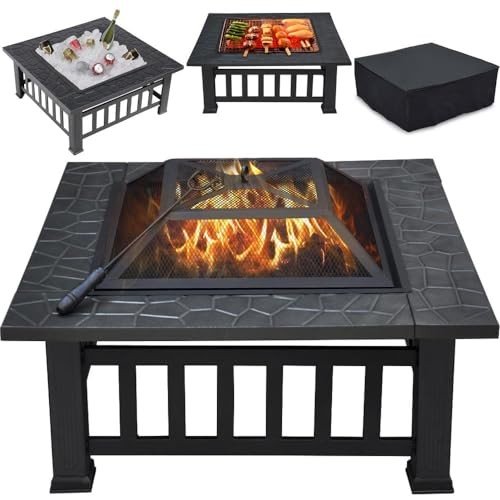The 10 Most Terrifying Things About Wood Burning Fireplaces UK
Wood Burning Fireplaces in the UK: A Comprehensive Guide
Wood burning fireplaces have long been a staple of warmth and appeal in homes across the UK. The crackling noise of burning wood and the flickering of flames produce a welcoming atmosphere, transforming a home into a warm sanctuary. With Outdoor Fireplaces UK growing trend of eco-friendly heating solutions, wood burning fireplaces are becoming increasingly popular once again. This article offers a thorough appearance at wood burning fireplaces in the UK, their benefits, policies, maintenance, and other essential details for potential buyers and users.
Comprehending Wood Burning Fireplaces
Wood burning fireplaces can be specified as enclosed spaces developed for burning wood, providing both heat and visual appeals to living spaces. They come in different styles, accommodating modern looks and traditional styles.
Types of Wood Burning Fireplaces
Open Hearth Fireplaces: Traditional in style, open hearth fireplaces provide a genuine experience. However, Fireplace Deals UK are less efficient and can lead to heat loss.
Wood Burning Stoves: These are closed systems that burn wood efficiently. They can be freestanding or inserted into existing fireplaces.
Fireplace Inserts: Designed to be fitted into open hearths, these inserts enhance combustion performance while keeping the traditional appearance.
Pellet Stoves: These are modern wood burning appliances that use compressed wood or biomass pellets, providing a cleaner burn and higher performance.
Outdoor Fireplaces: These are developed for external usage, typically improving outdoor living spaces and supplying heat during events.
Advantages of Wood Burning Fireplaces
Eco-Friendly: When sourced sustainably, wood burning can be a carbon-neutral heating option.
Affordable: With increasing energy rates, using wood can be a more affordable choice, particularly if you have access to totally free or affordable wood.
Aesthetic Appeal: The atmosphere created by a roaring fire is unrivaled, including character and charm to any area.
Versatility: Wood burning fireplaces can be found in different styles and designs, making them ideal for practically any interior decor.
Self-Sufficient Heating: In remote areas or throughout power failures, wood burning fireplaces provide a trustworthy source of heat.
Regulations Surrounding Wood Burning Fireplaces in the UK
To preserve air quality and guarantee security, the UK federal government and regional authorities have established regulations worrying using wood burning fireplaces.
Smoke Control Areas: Many urban locations are designated as smoke control locations where just 'Exempt Appliances' can be used to burn wood.
EPA and Defra Certification: Wood ranges and fireplaces need to comply with regulations from the Environmental Protection Agency (EPA) and the Department for Environment, Food & & Rural Affairs (Defra).
Biomass Requirements: Only sustainably sourced wood logs must be burned, sticking to guidelines to decrease carbon emissions.
Air Quality Regulations: Regular checks might be required to make sure that your fireplace does not produce extreme smoke emissions.
Aspect
Information
Type of Fireplace
Open Hearth, Wood-Stove, Insert, Pellet Stove, Outdoor
Eco Friendliness
Sustainable sourcing makes it carbon-neutral
Regulations
Must comply with regional smoke control and emissions laws
Performance
Differs by type; wood stoves usually use higher efficiency
Aesthetic Options
Vast array of styles, from traditional to modern styles
Maintenance of Wood Burning Fireplaces
Proper maintenance is important to make sure the security and durability of wood burning fireplaces. Following these guidelines can help property owners enjoy their fireplaces every year.
Routine Maintenance Tips
Annual Inspections: Hire a professional chimney sweep to inspect and clean up the chimney a minimum of when a year.
Inspect for Creosote Buildup: Creosote, a byproduct of wood burning, can collect in the chimney and present fire dangers.
Fireplace Cleaning: Regularly clear out ash and debris from the firebox to enhance efficiency.
Examine for Cracks and Damage: Inspect the fireplace and flue for fractures or damage that could impact efficiency or safety.
Use Seasoned Wood: Only burn dry, skilled wood to minimize creosote accumulation and enhance performance.
Safety Precautions
Set Up Carbon Monoxide Detectors: Ensure that your home is geared up with CO detectors to keep an eye on gas levels.
Keep Flammable Items Away: Maintain a safe range in between the fireplace and flammable items.
Never Leave Unattended Flames: Always supervise the fireplace while it's in use.
Use a Fire Guard: Install a screen or guard to prevent embers from leaving the fireplace.
Inform Everyone: Ensure that all family members understand the safe operation of the fireplace.
FAQs About Wood Burning Fireplaces in the UK
Q: Is it legal to use a wood burning fireplace in metropolitan locations?
A: Yes, however you must comply with regional policies, particularly if you reside in a smoke control location.
Q: How can I inform if my appliance is exempt?
A: Look for the 'Exempt Appliance' label certified by Defra, indicating that the home appliance meets emission limits.
Q: What type of wood is best for burning?
A: Seasoned woods like oak, ash, and birch burn most effectively. Softwoods like pine can produce more creosote.
Q: How often should I clean my chimney?
A: It's advised to tidy and check your chimney a minimum of when a year, more frequently if you utilize it often.
Q: Are there benefits to using a wood burning stove over an open fireplace?
A: Yes, wood burning ranges are generally more effective, produce less smoke, and use much better heat retention compared to open hearth fireplaces.
Wood burning fireplaces stay a cherished function of lots of homes throughout the UK, blending usefulness with aesthetic appeal. By comprehending the various types, benefits, policies, and upkeep requirements, house owners can enjoy the warmth and ambiance of a wood burning fireplace while sitting conveniently within regulative boundaries. With a growing concentrate on sustainability, wood burning might continue to serve as a viable heating option for several years to come. Whether you're an experienced user or checking out the alternative for the very first time, ensuring responsible usage and maintenance will maximize both security and satisfaction.
